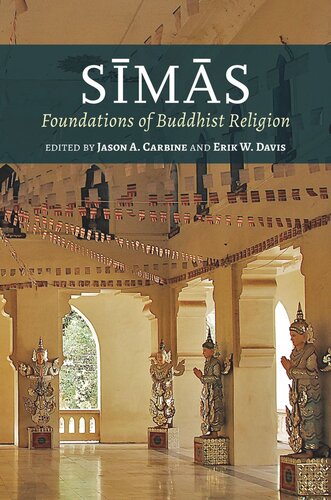

Most ebook files are in PDF format, so you can easily read them using various software such as Foxit Reader or directly on the Google Chrome browser.
Some ebook files are released by publishers in other formats such as .awz, .mobi, .epub, .fb2, etc. You may need to install specific software to read these formats on mobile/PC, such as Calibre.
Please read the tutorial at this link: https://ebookbell.com/faq
We offer FREE conversion to the popular formats you request; however, this may take some time. Therefore, right after payment, please email us, and we will try to provide the service as quickly as possible.
For some exceptional file formats or broken links (if any), please refrain from opening any disputes. Instead, email us first, and we will try to assist within a maximum of 6 hours.
EbookBell Team

4.7
86 reviewsHuman-fashioned boundaries transform spaces by introducing dualisms, bifurcations, creative symbioses, contradictions, and notions of inclusion and exclusion. The Buddhist boundaries considered in this book, sīmās—a term found in South and Southeast Asian languages and later translated into East Asian languages—come in various shapes and sizes and can be established on land or in bodies of water. Sometimes, the word sīmā refers not only to a ceremonial boundary, but the space enclosed by the boundary, or even the markers (when they are used) that denote the boundary.
Sīmās were established early on as places where core legal acts (kamma), including ordination, of the monastic community (sangha) took place according to their disciplinary codes. Sīmās continue to be deployed in the creation of monastic lineages and to function in diverse ways for monastics and non-monastics alike. As foundations of Buddhist religion, sīmās are used to sustain, revitalize, or reform Buddhist practices, notions of identity, and conceptualizations of time and history. In the last few decades, scholarly awareness of and expertise on sīmās has developed to a point where a volume like this one, which examines sīmās across numerous cultural contexts and scholarly fields of inquiry, is both possible and needed. Sīmā traditions expressed in the Theravāda cultures of Myanmar, Thailand, Laos, Cambodia, Bangladesh, and Sri Lanka constitute the dominant focus of the work; a chapter on East Asia raises questions of historical transmission beyond these areas. Throughout contributors engage texts; history; archaeology; politics; art; ecology; economics; epigraphy; legal categories; mythic narratives; understandings of the cosmos; and conceptualizations of compassion, authority, and violence.
Examining sīmās through multiple perspectives allows us to look at them in their contextual specificity, in a way that allows for discernment of variation as well as consistency. Sīmā spaces can be both simple and extremely intricate, and this book helps show why and how that is the case.